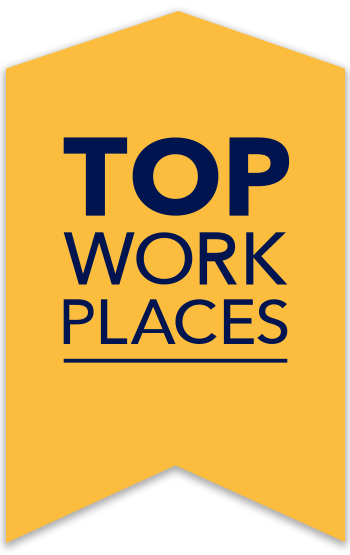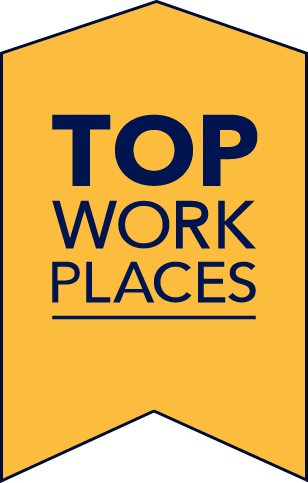While some companies offered flexible working arrangements before the pandemic, many were forced into a remote workforce almost overnight. While managing remote employees may be intimidating at first, many companies are now reaping the benefits of workplace flexibility, including greater employee satisfaction, retention, and productivity.
What Is Flexible Work?
Workplace flexibility practices aren’t limited to working from home. Other examples include flexible work schedules, compressed workweeks, and job sharing.
During the pandemic, managing flexible work arrangements required increased engagement efforts to ensure remote employees felt connected and supported. But at its core, flex work makes it easier for employees to achieve a better work-life balance. The key is knowing what matters most to employees. And that begins with employee feedback.
Top Workplaces award winner Kraus Anderson regularly utilizes the Energage Workplace Survey to focus on their employees and gain a deeper understanding of their needs. This has enabled the three-time award winner to increase engagement, reduce turnover, improve performance, and promote business efficiencies.
Similarly, Power Home Remodeling relied heavily on employee surveys to stay connected with furloughed employees. Keeping employees engaged made it easier to transition when it was safe to bring employees back to work.
In July 2021, Energage announced the winners of the Top Workplaces national award for Work-Life Flexibility. See the complete list here.
Best Practices for Flexible Work
When COVID-19 hit, many organizations didn’t have time to implement flexible workplace best practices. This left managers and employees questioning remote work guidelines and looking for ways to stay connected. But with the return to work transition in full swing, it’s time to reflect upon flexible work arrangement best practices and set a plan for moving forward. Here are a few essential recommendations to consider when adopting workplace flexibility best practices.
Setting Expectations
Employees may enjoy the perks of working from home. However, they still need the support and guidance they had in an office environment. The key to managing flexible working arrangements is to set clear expectations. Be sure to communicate clear deadlines, collaboration expectations, and measures of success.
Communication
To sustain the benefits of workplace flexibility, HR and leaders need to communicate proactively to ensure employees feel well-informed about important decisions. Communication is one of the characteristics of a good manager. Using an online calendar, be sure to find convenient meeting times so that everyone can participate in your communication efforts.
Identify the best communication methods for your organization, such as:
- Slack for instant messaging
- Asana for project management
- Zoom or Google Hangouts for conferencing
- Google Drive or One Drive for sharing files
Encourage Flexibility in All Aspects
When managing flexible work arrangements best practices, keep in mind that workplace flexibility means different things to different people. Companies need to encourage their employees to think creatively and work with managers and teammates to find an arrangement that supports workplace flexibility for everyone.
Companies with flexible work arrangements also consider barriers that get in the way. The best remote companies to work for follow best practices and strive to maintain and improve employee engagement. Automatic approval for remote work requests, access to the tools needed to support remote work, and even encouraging leaders to work remotely are great examples.
Focus on Measuring Outcomes
Adapting to best practices for working from home requires a mindset focused on outcomes rather than processes. While it may seem counterintuitive, giving employees greater control over how they work can ultimately lead to greater productivity.
An outcome focus also gives employees a clear understanding of performance expectations and the metrics that will measure their work. Pulse surveys are an excellent way for companies to check in with their employees on many different topics related to flexible work arrangements. These short, targeted surveys can also inform changes to best practices for working from home.
Accountability
Personal accountability plays a vital role in shaping best practices for flexible workplaces. Employees should understand they will be held accountable for the results of their work and productivity, even if they are working from home. Measuring outcomes and transparently communicating those results can establish benchmarks to keep employees inspired, engaged, and accountable.
Why is Workplace Flexibility Important?
The best companies for work-life balance stand out as an employer of choice with a forward-thinking approach and focus on the changing needs of their employees. Flexibility appeals to top talent in search of a work-life balance and your current employees. They will be more productive and committed to your organization with a flexible work approach.
Take the first step toward being recognized as an employer of choice. Nominate your company for Top Workplaces.

 Stand out with an award-winning
Stand out with an award-winning